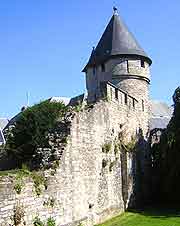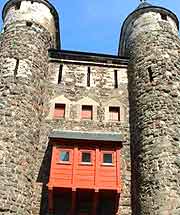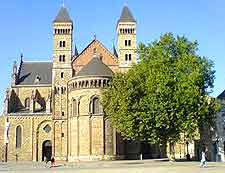Maastricht History Facts and Timeline
(Maastricht, Limburg, Netherlands)

Maastricht was founded in 50 BC as a Roman colony. Roman forces were, no doubt, drawn by its strategic location on the banks of the River Maas. They quickly built a military camp on either bank and named the settlement Mosae Trajectum.
A castle was constructed to defend the settlement, while a bridge was built over the river on the orders of Emperor Augustus. The bridge allowed trade to take place more easily between
France and
Germany.
Maastricht appears to have had considerable religious significance during its early history. By the 4th century AD, Christianity had taken hold here. The first church and religious community were founded by St. Servaas. Maastricht was also a bustling commercial city, with its bridge still playing a vital part in trade.

Rise to Prosperity
In 1220, Maastricht was granted the right to call itself a township. Ruled over by the Duke of Brabant and also the Prince Bishop of Liege, it is fair to say that this wasn't an easy alliance.
Maastricht rose to the peak of its prosperity in the 16th century. The city attracted craftsmen, particularly those who worked in precious metals. At that time, the Netherlands was ruled by the Spanish.
Spanish rule wasn't always popular, particularly in Maastricht. In 1576, the city rebelled against its masters. The revolt failed, however, and it wasn't until 1632 that Maastricht managed to free itself, returning to Dutch rule. Frederik Hendrik, the sovereign Prince of Orange, brought in a whole new era of political stability. More importantly, the new regime encouraged a greater degree of religious tolerance. Peaceful it may have been, but the city masters still upgraded its defences, just in case.

History of Modern Times
In the early 19th century, political boundaries were redrawn and a new state brought together Holland and
Belgium. It was intended to act as a defence against neighbouring powers. By 1830, the union had disintegrated. Whilst Maastricht should technically have remained part of Belgium, it decided to stay loyal to Holland under the Dutch Royal House of Orange.
In the 19th century, the Industrial Revolution came to Maastricht. The city became known for its pottery factory under Petrus Dominicus Laurentius Regout, whilst also being associated with its plentiful paper mills. The speed with which the city grew was boosted with the arrival of the railway.
Maastricht's neutrality during World War One meant that the effects of war were perhaps less severely felt here. However, the city still suffered. Floods of refugees came in search of homes and food. During World War Two, Maastricht was occupied by German forces - they stayed until 1944. In the post-war era, the city entered a new period in its history. This was a time when it could focus on restoring its historic buildings and build a new, more optimistic city.
In 1991, the city rose to prominence when it staged the European Summit and gave its name to a European Treaty. Today, Maastricht is a city that has something for everyone - a centre of learning, a place where manufacturing is still as strong as ever, and somewhere for visitors to enjoy a day out shopping.
 Maastricht was founded in 50 BC as a Roman colony. Roman forces were, no doubt, drawn by its strategic location on the banks of the River Maas. They quickly built a military camp on either bank and named the settlement Mosae Trajectum.
Maastricht was founded in 50 BC as a Roman colony. Roman forces were, no doubt, drawn by its strategic location on the banks of the River Maas. They quickly built a military camp on either bank and named the settlement Mosae Trajectum.
